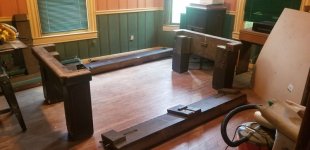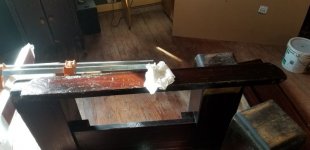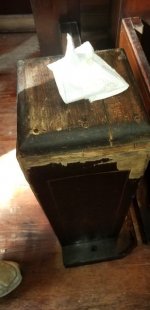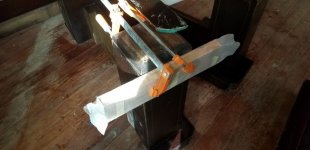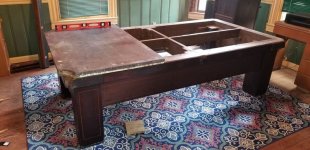Also I am using wood glue to stabilize the veneer. Not sure how I could get the hide glue behind the loose wood. Am I making a mistake?
Sigh.
The skills it takes to do restoration work well and conservatively aren't difficult. But they are still a skillset that is not instant.
If what you do, is successful for you, keep doing it. :thumbup:
That said, it is really difficult to fix things that are mucked up with modern glues. They don't mix well with old materials, and are comparatively impossible to get back out.
The one leg that the face veneers are ruined on mine, someone tried to stick down with titebond and possibly contact cement. It did not hold, the veneer face with bubbles and loose, got torn up by people kicking it, & the new glues prevented anything else from sticking until i strip them out.
That said, someone who had taken the time and understood the work, potentially could have made a good repair with titebond originally. But veneering with titebond is not easy unless you are clean, fast, and have good pressure cauls or a vacuum set up.
Hot hide glue mixes with itself, and more or less re-constitutes the old stuff in place, so long as it is not contaminated with modern glue, or other substances, nor moldy. As I noted in the link, it is kind of 2 steps - get the hot stuff in, using spatulas and plastic wedged to lift. It will gel in lumps. Then re-heat it with an iron (don't scorch the wood, the glue only needs to be about 140F or even less. Iron enough to get it liquid again, then "hammer" it down. The "hammer" is actually used like a squeegee. To squeege the glue further under, and to squeege it out. At this point the veneer should be pretty well re-stuck. But if there are still lumps or the glue cooled too fast, you can reheat, and squeege again.
Hot hide glue takes an initial gel that will hold the veneer in place. Then it develops strength as it dries over night or so.
I'm not a purist, i use epoxy and titebond for some things. I will use them when i put the solid edgings on the leg corners. I use mostly WEST epoxy and pressure or vac bags when veneering my own new work with my own, thick, shop sawn veneers. But a cabinet that was veneered with hot hide glue (not liquid hide) will be easier to repair using that same technique. IOW, I prefer the method because i am lazy and it is easier than alternatives.
Which gets back to keep doing what works for you.
smt
